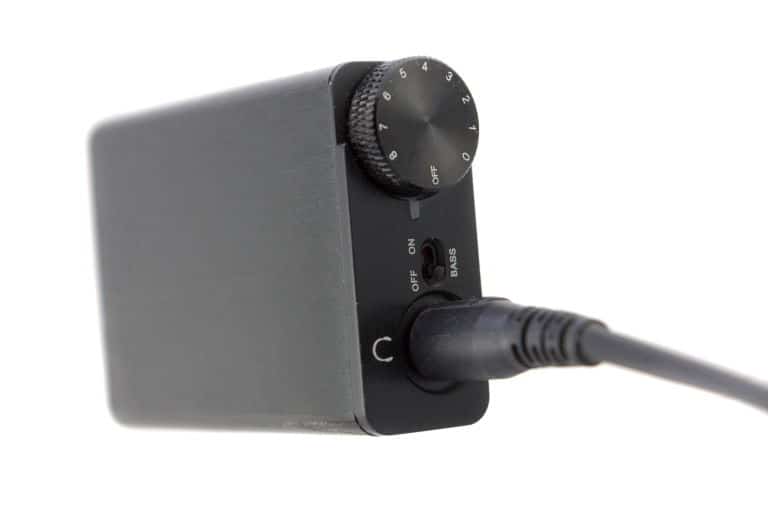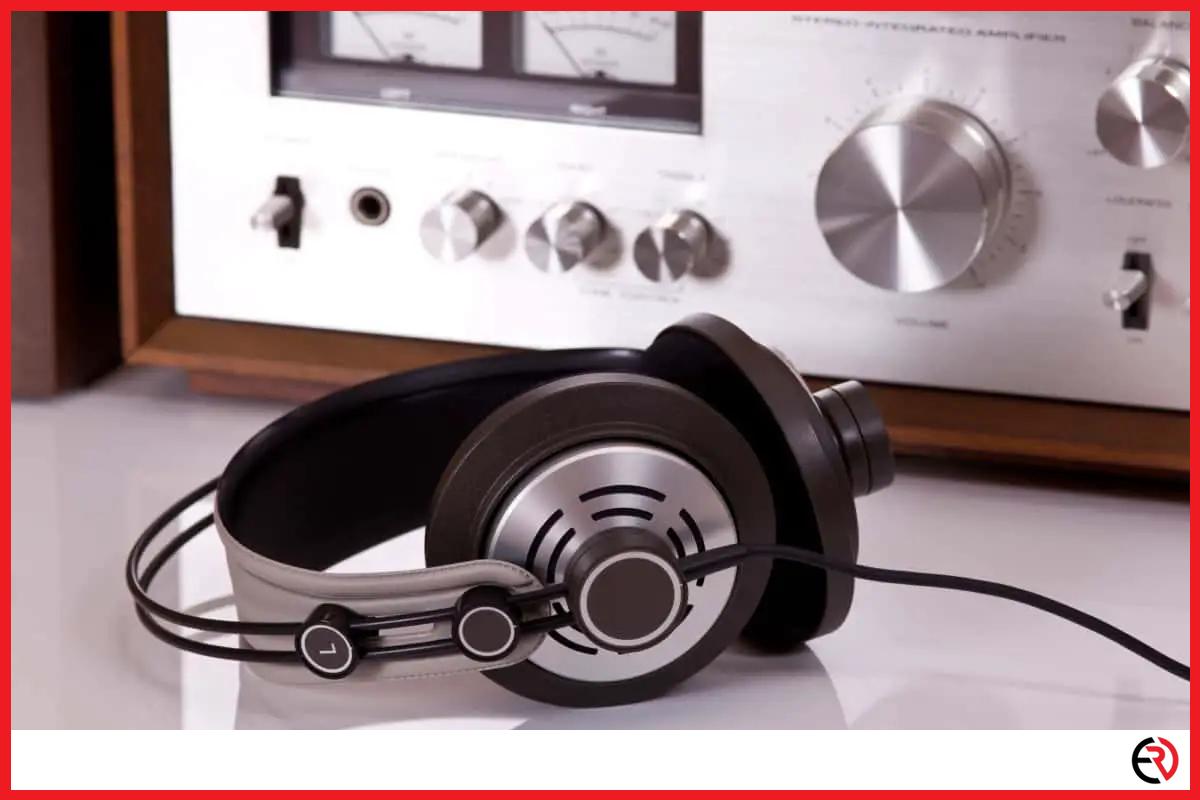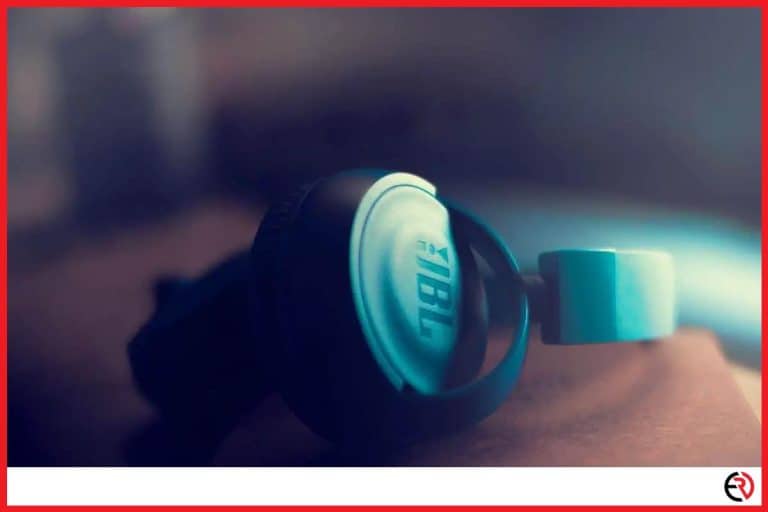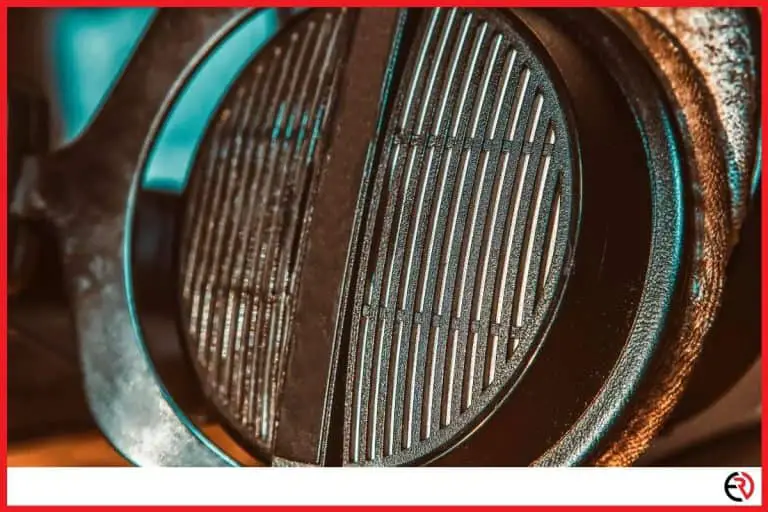Does a headphone amp make a difference?
This post may contain affiliate links which means that, if you choose to make a purchase, I may earn a small commission at no extra cost to you.
For most people who just want to listen to music on the go, a pair of headphones under $30 will be enough. However, if you want to listen to music in high quality, you must own a pair of good headphones or speakers. Many people assume that buying costly headphones from popular brands like Sennheiser or Beyerdynamic will do the trick but that is not always true. Better quality headphones generally have a higher impedance (current resistance) and need a dedicated amplifier to function properly.
So, if you have bought a pair of costly headphones and you are wondering whether you need a headphone amp, we got you covered. This article will cover all you need to know to understand the functions of a headphone amp and whether you should buy one. Let’s get started
What is a headphone amp and what does it do?
Headphone amplifiers are power efficient amplifiers that are designed to power headphones. Essentially, these work like a normal amplifier and boosts the power, current, and voltage of an electrical signal but uses much less power to function and are only suited to drive headphones. Thus, instead of connecting your headphones to the source of the audio, you connect them to the headphone amp which is connected to the audio source instead.
Electronic devices that allow you to listen to music by plugging in a headphone jack such as smartphones, portable music players, computers, and laptops, all have integrated amplifiers inside them.
When we talk about headphone amps, we generally mean standalone units or consumer-grade models that are used by audiophiles or hi-fi enthusiasts.
When do you need a headphone amp?
Better quality headphones need more power to work properly. If you plug in such headphones to your mobile device or laptop, you won’t be able to experience good quality sound or achieve the level of volume you desire as the integrated amplifiers of these devices cannot provide sufficient power to drive such headphones. In such cases, you have to use a headphone amp to bring out the full potential of these headphones and enjoy better quality music.
If you are unsure of whether you need a headphone amp for a pair of headphones that you intend to buy, you can check out the specifications of the headphones. Headphone manufacturers can list a lot of specifications about their products but generally, you only need to check these 3 specifications listed below to make your choice –
1. Impedance – Impedance is a measure of the resistance produced by an object or device to the flow of electrical current applied to it. Thus, if you apply the same amount of voltage to two devices with different impedance levels, more current will flow in the device with less impedance level than the one with a higher impedance. Impedance is measured in ohms (Ω).
Most normal headphones have an impedance of 16-32 ohms but high-quality headphones can have an impedance starting from 200 ohms to all the way up to 600 ohms. Typically, smartphones, mp3 players, and laptops will be able to run headphones with an impedance level of up to 35 ohms very well. Between the levels of 35-100 ohms, you may be able to get away with it but if you use a headphone amp it will breathe new life into the sound. For anything above 100 ohms, you must use a dedicated amplifier.
Check out this video for a more in-depth explanation about impedance:
2. Sensitivity – Headphone sensitivity is related to the impedance of the headphone but it also depends on a lot of other factors. Essentially, sensitivity is the measure of loudness produced by a pair of headphones when a current is applied to it. A more sensitive pair of headphones will produce higher sound levels compared to a pair of headphones with lower sensitivity if you apply the same amount of power. It is also known as Sound Pressure Level (SPL) or sound efficiency and measured in decibel level (dB).
Headphones which have lower sensitivity rating will require more power to achieve higher quality sound and the appropriate volume. However, headphones with a high sensitivity rating will pick up unwanted sound signals like electronic hissing noise, etc.
A sensitivity rating of anything below 90dB can be considered low while anything above 110db is considered high.
3. Frequency response -The frequency response of a pair of headphones is the measure of the range in which it can produce sound. It is measured in Hertz (Hz). The frequency range typically covers 3 sound spectrums: Low-frequency base, the mid-range, and high-frequency treble. Most headphones have a frequency range of 20-20,000Hz as typically, the human ear is unable to detect any sound below or above this range.
However, high-quality headphones can have a frequency response range that can reach as high as 40,000Hz and go as low as 5Hz. Of course, these types of headphones with a wider range are costlier but these are worth it for those audiophiles who can detect sounds in these extreme ranges.
A list of popular headphones which work great with a headphone amp is given below:
1. Sennheiser HD800 – These popular headphones have an impedance of 300 ohms and a frequency response of 4-51,000 HZ (-10dB).
2. Beyerdynamic DT 880 – This is another classic product and very popular among audiophiles. It has an impedance of 600 ohms and a frequency response of 5-30,000 Hz.
3. AKG Pro K-702 – These headphones are good for audio professionals. The AKG Pro K-702 headphones have an impedance of 62 ohms and a frequency response of 10-39800 Hz.
Why should you buy headphones with higher impedance?

Now, you may wonder why you should buy headphones with higher impedance when you can get away with using ones that have lower impedance. That is perfectly understandable. Modern technology has made it possible to manufacture headphones that can produce high-quality sound even with low impedance. These types of headphones are generally cheaper and you will also save the cost of buying a headphone amplifier.
If all you want to do is listen to music and you also want to enjoy music on the go, a pair of normal headphones will suit you the best.
However, if you want to experience the best quality music possible, you have to buy a pair of good quality headphones that have a high impedance and pair it up with a good headphone amplifier as well. If you are an audio engineer, sound designer, and composer, or a professional who uses studio-grade audio equipment to record music, you can benefit greatly by using high-quality headphones.
Let me give you an analogy to help you understand better. If you want to play the most demanding PC games (listen to high-quality music) in the best graphical settings (best sound quality), and achieve the smoothest frame rate (distortion-free experience), you need to purchase the best hardware (high-quality headphones) like an i7 and a GTX 2080ti. However, to run such a setup properly you need a better power supply unit (headphone amp). Otherwise, the hardware will not run properly.
Of course, you can try to play the most demanding games using budget hardware (normal headphones) but you will not be able to achieve the highest graphics quality or play it smoothly.
How is impedance related to sound quality?
The impedance of a headphone depends on the size of its driver unit or voice coil. Basically, headphones that have a lower impedance have a smaller voice coil than the ones with a higher impedance. Headphones with a larger voice coil produce a stronger electromagnetic field. Essentially, this means that headphones with high impedance produce a more balanced, cleaner, and higher quality sound level even if you crank up the volume all the way up.
Thus, a pair of good quality headphones that have a high impedance allows you to experience distortion-free music even at higher volume levels.
Headphones with lower impedance are also more susceptible to damage if you put in too much power into them. However, that is not the case with headphones which have a higher impedance as these need more electrical current to function.
Thus, it is not recommended to connect headphones which have a lower impedance to amplifiers as you may unknowingly damage them. Plus, the amp will boost the volume of the headphone to unnecessary levels and produce distorted sound quality which is unpleasant to the ears.
Does headphone amp affect audio quality?

Headphone amps can greatly affect the audio quality of good quality headphones which have a high impedance (more than 50) and a wide frequency response. However, it may not improve the quality of sound by much if you use a cheap pair of headphones. In fact, it is not recommended to use a headphone amplifier with low-quality headsets which have high sensitivity and low impedance.
Another reason why using a good headphone amplifier can boost the quality of sound is the inclusion of a high-quality DAC (digital to analog converter) inside them. A DAC is an electronic component that converts the digital information of an audio file (mp3, FLAC, wav) into an analog signal which can then be used by headphones to produce sound. A higher-quality DAC will result in better audio quality.
Audio devices like mp3 players or digital devices like smartphones and PC have DACs built into them but these are generally of low quality and can pick up unwanted sound signals such as hissing or static noises. Popular headphone amps have higher quality DAC inside them and as a result are able to produce better quality sound (cleaner, purer, distortion-free).
To further complicate things, you should note that most headphones use dynamic drivers which do not maintain a flat impedance response across all frequency ranges. The impedance stated by most manufacturers is typically measured at 1Khz frequency and it can vary a lot across different frequency levels depending on the resonant frequency of the headphone’s driver.
Generally, it is observed that during low-frequency levels (20-100 Hz) many headphones experience an unusual impedance spike which can be significantly more than the impedance stated by the manufacturer. Integrated amps inside Pc or smartphones cannot deliver sufficient voltage to match these impedance spikes and as a result, you notice frequency roll-offs or sound distortion in these low ranges.
However, if you pair these headphones with a sufficiently powerful amp, you can experience a deeper, richer, and fuller bass without any sound distortion and actually feel the soundwave which makes the music come alive.
How to choose a headphone amp?
You may think that to experience the best sound quality, you just have to buy a pair of good headphones with a wide frequency range, high impedance and pair it up with an amp that can provide the maximum power. However, that is not the case. To achieve the highest audio quality, you should focus more on impedance matching than raw power output.
So, you not only have to consider the impedance of the headsets but also consider the impedance of the audio source, which in this case is the headphone amp. Don’t confuse the impedance rating between the source and the headsets. In case you don’t use a headphone amp, the audio source will be your smartphone, laptop, mp3 player, etc.
As a rule of thumb, the impedance of your headsets should be about 2.5-8 times higher than the impedance of the audio source or headphone amplifier if you want to achieve the best sound quality. If the impedance of the amplifier is equal or more than the headphones, it will result in poor sound quality.
This is why a normal pair of headphones with a low impedance (less than 50) can sound so great when paired with your smartphone, laptop, or mp3 player. These devices provide less power but that is an ideal impedance matching for such headphones.
So, how can you select the appropriate headphone amp to power your high impedance headsets?
Well, you have to figure out the power requirement of your headphones and find out whether the amp you want to buy can deliver that power. It is very easy to calculate the power-requirement of headphones if you look at their specifications and use a free online headphone power calculator tool like digizoid.
Just insert the impedance in ohms and the sensitivity/efficiency in either dB SPL/mW or dB SPL/V respectively and press the calculate button. The calculator will list the power needed to drive the headphones up to a particular loudness level. Also, remember that power is not only about volts and you should also consider the level of current you need into the equation.
Just remember that headsets that have a higher impedance will require more volts and headsets with lower impedance will require more currents. More volts are necessary to increase the loudness and boost the midrange and treble whereas more currents are needed to generate deeper bass.
Of course, before finalizing a product, you must also look at online reviews and check the user ratings of the product that you want to purchase.
Check out this video with useful information about headphone amps:
Headphone amps for mobile phones
There are various types of headphone amps that are available in the market and it can be difficult to make a decision to select one out of them. So, we have listed 2 of the most popular products that can power most high-quality headphones. These are listed below:
1. FiiO A3 Portable Headphone Amplifier – The FiiO A3 is a portable headphone amp that can power headsets with an impedance rating of 16-150 ohms. The aluminum-alloy body of the device prevents it from interference and is great to look at.
It has a dedicated gain and bass boost button along with a volume control dial. The pre-amplifier OPA1642 adjusts the medium and high frequency while the power amplifier adjusts the low-frequency range. It has a battery capacity of 1400mAh which has an average battery life of 16hrs.
This headphone amp is good for people who enjoy listening to music with a lot of bass.
2. Creative Sound Blaster E1 Portable Headphone Amp – The Creative Sound Blaster E1 is a portable amplifier that also comes with an integrated mic and dual headphone jacks. This device supports high impedance headphones up to 600 ohms. The Signal-to-Noise Ratio (SNR) of this amp is rated at 106dB. Thus, you can enjoy high fidelity audio without a drop in quality.
At only 25 grams and with a battery life of up to 25hrs, it is very easy to carry it around.
You can connect this device to your Pc or Mac computer and personalize your audio experience with the SBX Pro Studio technology.
Conclusion
If you are not an audiophile, it can be a little hard to choose the right pair of headphones for your listening needs. On top of that, if you need to choose a headphone amp, things can get quite complicated. This guide was created to give you a basic understanding of headphone amps, how they work, whether you really need one, and how to select one that can work well with your headphones.
Take your time, watch YouTube videos, consult your audiophile friends, and read reviews of the products that you like. Just, remember to follow the tips listed on this guide to make sure you don’t make a mistake.







